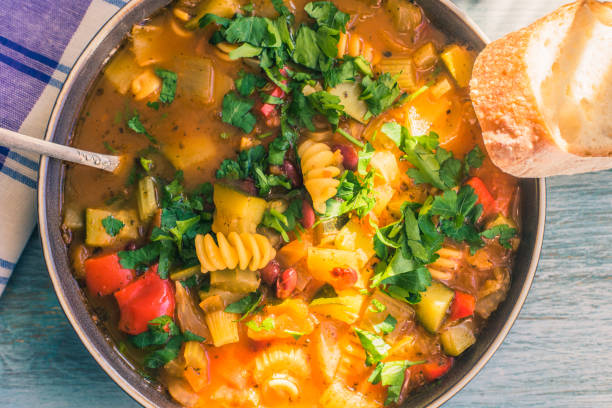Canned soups and stews can easily be jazzed up with more vegetables, herbs, spices, and grains. These canned products may not have as many vegetables as recommended, so adding more will increase the nutritional value. Vegetables are full of nutrients, minerals, and fiber and should make up about half the “plate” for a balanced meal. Just half a cup of carrots adds 73% of the daily recommended value of vitamin A. Other vegetables that work well in canned meals include parsnips, corn, potatoes, green beans, kale, Swiss chard, spinach, celery, and diced tomatoes—the more variety of vegetables, the better.
Herbs and spices are helpful for increasing the flavor and making canned soups/stews more interesting while adding antioxidants. If herbs are dried, they should be added towards the beginning of the cooking period for the most flavor. Fresh herbs should be added closer to the end of the cooking process since they are more delicate. Possible herbs include rosemary, thyme, basil, parsley, and bay leaves. Spices include garlic powder, onion powder, cayenne pepper, black pepper, paprika, or marjoram. Start with small amounts and taste as you go. Using these other spice options can reduce the sodium while still adding flavor.
Adding whole grains will bulk up the stew, increase the amount of fiber, and create a more balanced bowl. Fiber slows digestion, regulates bowel movements, and aids in lowering cholesterol. There are many whole grains that would work well in soups/stews including barley, farro, whole wheat pasta, buckwheat, quinoa, and brown rice. The latter three are gluten-free options.
Experiment with these tips and find what combination works well with your favorite canned soups. Remember to think about what can be added, not subtracted!
Written by:
Ellie Goddard, Dietetic Intern


